|
October 1957 Radio & TV News
 [Table
of Contents] [Table
of Contents]
Wax nostalgic about and learn from the history of early
electronics. See articles from
Radio & Television News, published 1919-1959. All copyrights hereby
acknowledged.
|
Audio crossover networks
have the same fundamental mission as RF multiplexer filters in radio systems,
which is to separate and steer specific bands of frequencies into two or more
signal paths. While simple in concept, implementation in hardware can be a major
challenge depending on requirements for channel separation, feedthrough, phase
and group delay, amplitude equalization, distortion, and other factors. This
article discusses some of the decisions used by crossover network designers
when considering where to make band breaks, while leaving actual circuit design
rules to other authors. I built a set of custom speakers many moons ago and
went through the frustrating process of deciding where to place the breaks and
which speakers to use (based on their rated frequency
responses). In the end, I got an acceptable result, but I never was convinced
that all my work - including paying for fairly expensive
(on USAF, A1C pay) coils for the bass part of
the crossover network - justified the trouble. While I appreciate a truly fine
audio system, 'good enough' is a fairly low standard for me when trading off
quality and cost.
Choosing Your Crossovers
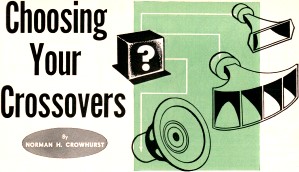
What crossover frequencies and circuits should you use in your 2-, 3- and
4-way hi-fi speaker systems?
By Norman H. Crowhurst
When you set out to choose your hi-fi loudspeaker installation, you probably
do not choose the crossovers as a separate entity, it is true. But different
systems offer quite a variety of different crossover frequencies and rates of
roll-off, etc., so you will want to know what it is that governs this choice.
How many crossovers (two-, three- or four-way system), what frequencies are
used for crossing over, and how sharply do the crossovers act are questions
to which each system gives different answers.
How Many?
On the question of how many crossovers, there are two extreme schools of
thought. One of these favors no crossovers at all - a single extended range
loudspeaker unit, that responds to all the frequencies in the audio range. According
to protagonists for this approach, you will avoid all the phase shifts and all
the problems that crossovers "get you into." What you don't avoid, however,
is the problem of getting one loudspeaker unit to respond to a frequency range
covering the ratio of 1000 to 1, from 20 cycles to 20,000 cycles. Even if you
are content with a slightly less ambitious range, say from 40 cycles to 10,000
cycles, this is still a tremendous range of frequencies to cover with one vibrating
system.
To radiate the low frequencies satisfactorily, it must inevitably have a
large surface area exposed for radiation. To radiate the upper end satisfactorily
it must be extremely light and rigid, to avoid the kind of break-up that causes
erratic response to consecutive frequencies.
Another requirement is that it shall not introduce any distortion. If there
is any distortion in the way it handles the lower frequencies with the large
movements they involve, this will also modulate the higher frequencies, besides
causing distortion components to the low frequencies themselves. This intermodulation,
as it is called, gives a "dithery" rendering of programs when low frequencies
and high frequencies occur at the same time, and can be particularly noticeable
on material like organ music.
It is practically impossible to make a loudspeaker unit with perfectly uniform
response over a range of even 250 to 1 (let alone 1000 to 1) and also with absolutely
no distortion, particularly of the lower frequencies. The use of crossovers
proves to be a boon in helping out, both to achieve a uniform frequency response
and minimize intermodulation distortion. This leaves us with the question, how
many crossovers, and where?
Here the protagonists of the opposite extreme come in by pointing out that
serious intermodulation distortion can only appear when more than one octave
is handled by the same loudspeaker. Consequently it would be good to have 10
loudspeaker units, each covering an octave and thus completing the range from
20 cycles to 20,000 cycles. The first loudspeaker unit would cover from 20 to
40 cycles, the second 40 to 80, the third 80 to 160, the fourth 160 to 320,
and so on, up to 20,480 cycles. This would necessitate nine crossovers between
the 10 units.
Of course, there is no comparison between the effect of these two extremes
on the budget requirement. However good a single extended-range loudspeaker
unit is made, it would never approach the cost of 10 separate units, each made
for its own frequency range, with nine crossovers. So it might appear that the
number of crossovers you use depends on your budget. But before our millionaire
readers proceed to order 10-way loudspeaker systems, it should be pointed out
that this extreme is not the ideal either.
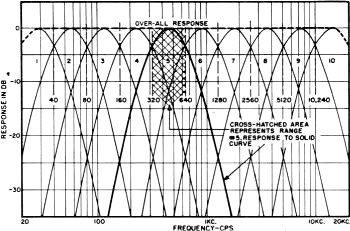
Fig. 1 - Above curves show the division of the entire audio spectrum
into ten octaves. This may be regarded as the very "ultimate" in the number
of crossovers.
While, if well designed, it would certainly do a wonderful job of providing
a smooth frequency response and freedom from IM distortion, this is not all
that is required of a system. In fact, from some aspects, it is not even the
most important thing required of a system.
Smooth frequency response, as measured by steady tone testing, is one thing,
but a smooth frequency response, as judged by listening to program material,
often proves to be quite a different matter. This is because our listening is
much more dependent upon the transient response of the system than its response
to the steady tones used for testing.
If you put a loudspeaker inside the voice box of a pipe organ and opened
all the pipe valves, the frequency response of the system, measured with a continuous
gliding tone, would come out pretty close to flat. But can you imagine what
the loudspeaker would sound like? You've guessed it, like a program being heard
through a mass of tuned pipes. A 10-way system, it is true, would not be quite
as bad as this, but it would follow the same general trend.
Each octave bandpass filter will need to have sharp cut-offs at each side
if we are going to take full advantage of the way this system can minimize intermodulation
distortion (Fig. 1). This would mean that tones in each band would set
up a kind of ringing from the loudspeaker on the particular tone played, caused
by the characteristics of the filter. It is true the "ring" would not be so
pronounced as with a tuned pipe, but it would still result in reproduction with
considerably more coloration than the simpler types of systems despite the fact
that the steady tone response looks flat.
So there are disadvantages to both extremes. As a compromise, most loudspeaker
systems now fall into the two-way or three-way classes, with a few going to
four-way. Having narrowed down the number of crossovers to choose, we can now
take the next question.
Where?
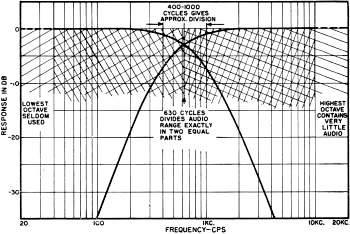
Fig. 2 - When a two-way system is employed. the use of a crossover
in the region of 600 cycles divides the entire audio spectrum into two equal
portions.
If you pick a two-way system, the logical crossover frequency will be somewhere
in the region of 600 cycles. Actually anywhere between 400 and 1000 cycles would
be satisfactory. The reason for this is that, whether you consider you need
the frequency response to be from 20 cycles to 20,000 cycles, or from 40 cycles
to 10,000 cycles, the middle of the range comes out to about 630 cycles. Since
both halves are 4 or 5 octaves, it is not critical, within half an octave or
so, to have the frequency at precisely 630 cycles. Anywhere between 400 and
1000 cycles will divide the spectrum approximately into two equal parts (Fig. 2).
If you take a three-way system and consider the spectrum as extending from
40 to 10,000 cycles, which is more like a reasonable extent, because there is
very little audio "intelligence" in the 20 to 40 cycle range and in the 10,000
to 20,000 cycle range, dividing this part of the spectrum into three approximately
equal parts will require crossovers at 250 cycles and 1600 cycles (Fig. 3)
.
This choice of frequencies brings an interesting fact to light: 250 cycles
is approximately the frequency of "middle C." Frequencies below this correspond
to the bass part of musical reproduction, while frequencies above this correspond
to treble. So this division gives us one band in the bass and two for the treble.
Actually the range from 250 to 1600 cycles could be regarded as the treble,
while the extreme high-frequency range from 1600 to 10,000 or 20,000 cycles
is principally occupied by overtones and transients that provide definition.
In speech the principal components in this top range are the consonant sounds
due to "s," "t," and "d."
Dividing the spectrum four ways would require crossovers at approximately
160 cycles, 630 cycles, and 2500 cycles (Fig. 4).
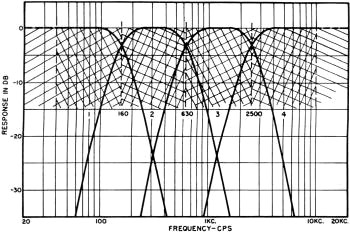
Fig. 3 - If it is desired to divide the more useful part of the entire
audio spectrum into three equal portions, crossovers would be required at
the frequencies of about 250 and 1600 cycles. A three-way system would use
such values.
This consideration has been based entirely on a consideration of the frequency
spectrum. If you consult loudspeaker catalogues you'll find few systems that
conform to the figures just given. This is because there are other factors that
complicate the choice. Wherever you divide the spectrum, by means of a crossover,
the lower frequencies are going to be reproduced by one loudspeaker while the
frequencies above this point come from another. In a musical program, it is
inevitable that the fundamental tones and possibly some of the lower harmonics
of certain instruments will be reproduced by one loudspeaker while other overtones
or higher frequencies will come from another unit. This is one of the undesirable
features of multi-way systems.
Another factor that needs some consideration is the distribution of the dominant
sound energy through the frequency spectrum. This should not be confused with
the apparent loudness of different frequencies. Most curves of average energy
spectrums will show there is not much in either speech or music below 100 or
200 cycles. But here the word average is important, especially for music. .
Bass notes are only evident in comparatively few passages, which is why an average
curve shows them low. However, when low notes are present, they have considerable
energy, and the system has to reproduce this energy - not an average figure.
At the other end, there is not much energy in speech above 500 to 1000 cycles,
but the small energy present is very important to intelligibility, to carry
consonant sounds, particularly "s," "t," and "d." Musical energy, too, tails
off above 1500 to 2500 cycles, except for short bursts from the percussion,
which again do not show up on an average curve. So a system should be able to
handle more or less uniform power peaks over the range from about 40 to 2500
cycles, and should be reasonably flat in response (at lower levels) from 20
to 20,000 cycles or, as a secondary standard, from 40 to 10,000 cycles.

Fig. 4 - With a four-way system, crossovers should be as shown. The
lowest channel would then handle frequencies up to 160 cycles; channel 2 would
cover 160-630 cps; channel 3, 630-2500 cps; and channel 4 would cover all
above 2500 cps.
Consequently a more usual approach is to cover as much as possible of the frequency
range with the mid-range unit. That is, we take as much as the mid-range unit
can comfortably handle without running into difficulties with frequency response
and intermodulation, then the part that the mid-range unit cannot comfortably
handle is delegated, at the low end to the woofer and at the high end to the
tweeter.
Fortunately this integration problem is not very important at the low-frequency
end. By the time you get down to 250 cycles, the wavelength is four feet. As
the biggest loudspeaker system doesn't usually exceed this dimension in one
direction, you are not going to suffer noticeable lack of integration between
frequencies below and above 250 cycles, or any similar crossover frequency for
that matter. So, to maintain good integration, the usual practice is to use
as low a crossover as possible without running into intermodulation problems.
If better integration can be achieved at the high end by pushing the crossover
up to, say 5000 cycles, then we may raise the lower crossover frequency as high
as, say, 600 cycles. Then the tweeter will just handle frequencies from 5000
cycles on up, where the mid-range unit runs into serious break-up problems.
The tweeter will maintain the smoothness of response at the high end.
A crossover around 600 cycles is not likely to run into serious integration
problems provided satisfactory transition is achieved in the 600 cycle region.
More of this in a moment, however. If 600 cycles is the crossover point from
the low frequency to the mid-range unit, the range from 20 cycles, or even 40
cycles, up to 600 cycles is rather wider than any of the other ranges. This
is the reason for going to four-way systems. A unit to handle all the frequencies
below 600 cycles can still cause intermodulation. Such division is not usually
necessary in the smaller living rooms with a well-designed enclosure. Only with
the larger systems, where the low-frequency unit has to encounter considerable
diaphragm movements at the bottom end of its range, is this a necessity to minimize
intermodulation.
How Much?
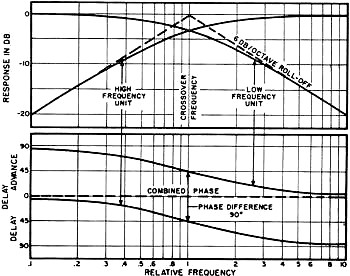
Fig. 5 - Here are the amplitude and the phase response curves for crossover
networks having a 6 db/octave slope. Note that at the crossover frequency
the phase difference amounts to 90 degrees.
So much for the question of the different possibilities in frequency of crossovers.
Next we come to the sharpness of the slope. Different crossovers employ different
degrees of separation between the frequencies. The simplest kind of crossover
uses just an inductance or a capacitance for each individual channel. This provides
an ultimate roll-off of 6 db per octave beyond a frequency of about 2 to 1 each
side of the crossover (Fig. 5).
If the individual units are connected in-phase, so both diaphragms move forward
when the fluctuation from the output transformer in their respective frequency
ranges is in the same direction, the response will come out flat, and the combination
of phase shift from the two will neutralize or cancel, resulting in a uniform
response in frequency and zero phase shift all the way up. Also this simple
kind of crossover does not introduce any measurable degree of transient distortion.
As soon as you get into more complicated crossovers that produce an ultimate
roll-off of 12 db, or more, per octave, there are phase shift problems and also
the transient response is likely to suffer. With a 12 db per octave crossover
(Fig. 6), the two voice coils should be connected in opposite phase, otherwise
at the crossover frequency they will be moving in opposite directions and cancel,
producing a "hole" in the frequency response.
This means that phase reversal occurs with this kind of crossover, through
the transition from one side of the crossover frequency to the other. In theory
this could convert a square wave into a triangular one. But demonstrations have
shown that such a change makes no audible difference. The more important difference
is in transient response. We begin to experience the effect described with the
10-way system. The transition from one unit to the other in the vicinity of
crossover is less likely to be satisfactory.
So why use steeper slope crossovers? The only satisfactory reason is for
minimizing the intermodulation distortion. Another reason that has been advanced
is the possibility of interference between the frequency response from the two
units. This will only occur if the frequency response from one unit becomes
quite erratic immediately beyond the accepted frequency range.
For example, a loudspeaker intended to reproduce up to 600 cycles might show
some erratic peaks and valleys in the region of 1000 cycles. This could seriously
interfere with the over-all response when combined with a separate high-frequency
unit, if the crossover was of the simple type (See illustration Fig. 7).
The answer to this argument is that a unit that becomes erratic in its response
so shortly beyond the accepted frequency range is probably not a very good unit
within the accepted frequency range, although its response may look good. Its
transient response will certainly not be as good as the steady tone response.
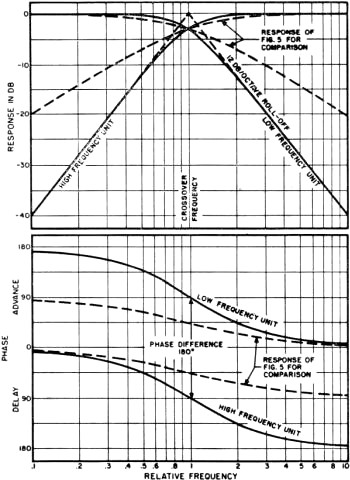
Fig. 6 - Relevant details of amplitude and phase response for the 12 db/octave crossover network compared with the 6 db/octave unit (dashed).
Not only does the crossover have to take care of delivering the right range
of frequencies to each unit, with uniform coverage, but sometimes adjustment
for balance is needed too. This is because often tweeters are more efficient
than woofers or mid-range units. If the tweeter unit is twice as efficient,
then feeding it straight-through from the crossover will make the tweeter give
twice the acoustic output it should to maintain balance. To care for this, a
good crossover should incorporate an attenuator, or balance control, so the
output in acoustic watts can be balanced to take care of differences in efficiency
between units.
This brings up another question - what controls to look for on a crossover.
In turn, this could lead into a much more complicated article, because there
is such a variety of ways adjustments can be made; but let's keep it simple.
Only electronic dividing networks have continuously variable controls, either
of crossover frequency or slope of roll-off, and that's another subject. But
some crossovers for use in loudspeaker circuits have adjustments that can be
made in steps, either to change the slope or the frequency. This may be done
by changing capacitor elements, or by changing taps on inductors, or both. If
you buy a unit with these facilities, make sure it comes with sufficient instructions,
so you know exactly what it can do. Don't be satisfied with a vague promotion
statement, such as "this unit is adjustable to suit your system's exact requirements."
Having three or four possible ways of connecting it will probably insure that
one way will sound better than the others, but it does not insure that any of
them are right.
You would do better to buy a unit with only one (right) way of connecting
it, than a "versatile" unit with inadequate information, so you do not know
what each position does. If it comes with complete information you will be able
to check that it does provide facilities for crossing over where you want it
to, and for feeding units at the impedance of your system (4, 8, or 16 ohms).
By and large, then, the recommendation seems to favor using the simpler crossover
and units designed to have a good response, not only within the range for which
they are intended, but also at least an octave beyond the nominal crossover
frequency. Then the over-all response, both to transients and intermodulation
distortion tests, should be quite acceptable.
We have spoken about the question of integration. A few more words of explanation
might be in order here. By integration we mean the radiation of sound as if
the whole frequency spectrum "belongs." This can perhaps best be illustrated
by showing what results without it. If a loudspeaker consists of two units,
say one handling below 600 cycles and the other above, and the low-frequency
unit gives a good smooth response radiated uniformly into the room, while the
high-frequency unit tends to eject its frequencies in a concentrated beam, away
from the low-frequency unit, one can easily get the impression that the high
frequencies in the audio spectrum are "squirted in" as an afterthought from
the side.
This is quite unrealistic on musical reproduction, and on speech it can become
distressing. The principal high frequencies in speech are due to the sibilants,
"s's" and so on. Lack of good integration will give the impression that most
parts of the voice come from the low-frequency unit, while the "s's" are added
from some completely different direction. This is even more unnatural than the
effect on musical programs.
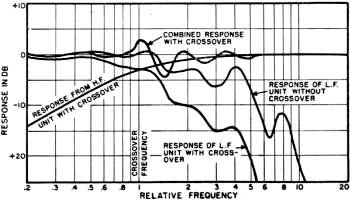
Fig. 7 - These curves show why the response that exists beyond the
accepted range (of the low-frequency unit in this case) can be important to
the system.
To summarize, then, the question of choosing a loudspeaker system and what crossovers
to utilize in it, depends to a considerable extent upon the rest of your system.
If you have a larger-than-average living room to supply with sound, or if
you intend to operate at unusually high levels, with an amplifier of 50 watts
or more, then intermodulation is likely to trouble you, and a three- or four-way
crossover is advisable.
For more average sized living rooms and moderate levels of reproduction,
a three-way crossover will certainly be adequate, and for smaller systems a
two-way crossover is quite sufficient.
The best choice of crossover frequency (ies) and the sharpness of the crossover
is dependent upon the types of units used. While there are broad principles,
based on the frequency spectrum itself, these are modified to a considerable
extent by the effectiveness of the units. In most instances, combinations put
out by a single manufacturer usually incorporate the best crossover frequency
for that combination.
While sharper crossovers have certain advantages in some circumstances, it
is better all round to choose a crossover with a more gradual transition from
one unit to the other as frequency passes through this region.
Fortunately in this branch of high fidelity we find the same thing we find
elsewhere, that paying a lot more for a more complicated system does not necessarily
give us better performance. In fact, if you shop around, you will be able to
find quite a good performing system at whatever price you are prepared to pay.
By paying more you naturally can get a better system, but just paying more and
getting more equipment into the system doesn't mean it must be a better one.
Posted February 25, 2021
(updated from original post on 8/28/2014)
|
















